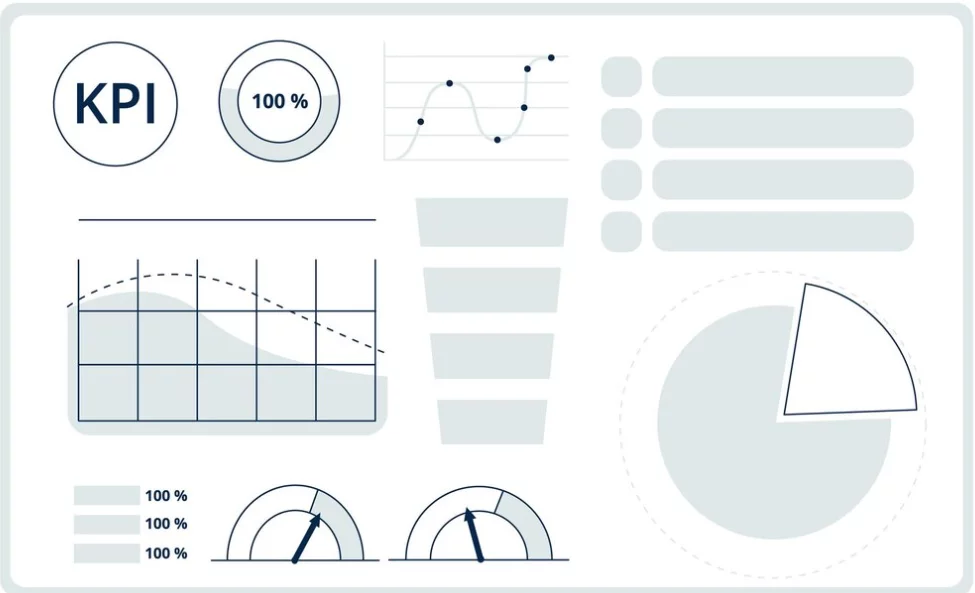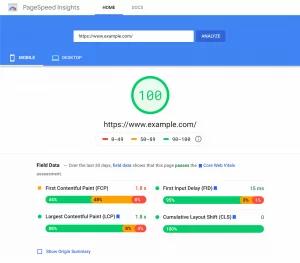The world of online marketing is becoming more and more cutthroat. Everyone would not succeed if they used the same boring business approaches to sell websites. It could seem difficult to sell a website or online business. Things become considerably more complicated when steps are taken to optimize value before a sale. Below, we provide a 7-step approach that will guide you through this difficulty.
How to Sell a Website in 7 Basic Steps
Step #1: Recognize Your Audience

Selling a website while wearing a blindfold is akin to trying to sell anything without understanding who might be interested in buying it or who you might be selling it.
When you are aware of who your target audience is, you may adjust or redesign your website to better reflect their interests and objectives. If a website draws a sizable following, you can sell it rapidly.
That, however, is insufficient on its own. For instance, the specialty needs to be something you believe people will be interested in for a very long time. This will facilitate the sale of a website and increase its worth.
So how do you even begin to know who your audience is? Technical SEO comes to the rescue in this situation. Finding out what people are interested in and what they seek most frequently is becoming a more and more regular practice, thanks to search engines. This is really significant while learning how to sell a website.
Therefore, make sure the audience will enjoy scrolling through your website before deciding to sell it, not simply because they are able to but also because they must. These websites will pique purchasers’ curiosity the most.
Tip: If you find that your website appeals to several audience categories, you can further reduce your options by segmenting the groups based on behavioral, demographic, geographic, and even psychographic criteria.
Step #2: Assess the Value of Your Website

Given that so many websites are just like it, why would anyone want to purchase yours? Does your website have the ability to generate income and long-term growth? Is the market so distinct that those who do not purchase it will lose out?
Identifying your website’s potential for long-term growth and revenue is the most important thing to consider when determining its value. For instance, there has been no change in Instagram’s global rating during the past three months. Instagram’s brand value was 33.48 billion dollars in 2022. This sum does not represent Instagram’s total net worth. In actuality, it is the platform’s potential disguised as a long-term ten-figure income.
The same idea can be used to market your website. How much money will it make over the long term? What benefits would it provide users? For instance, if your website has a steadily rising Google rating, it will draw more favorable bidders because of its potential long-term value.
The ideal price for a website is 25–35 times its monthly revenue. As a result, if your website brings in about $2,000 each month, you should think about selling it for about $50,000.
Step #3: Create a lead funnel

A lead funnel, also known as a marketing funnel, is a step-by-step procedure that increases customers’ awareness of your website and persuades them to buy it. Every lead funnel has the same four main stages: awareness, interest, decision, and action.
Following this lead funnel will help you to achieve the general goal of raising awareness. This goal might also turn your customers into potential buyers and perhaps even promoters for your website. You will gain a comprehensive, well-rounded understanding of how to sell a website as a result.
Here are the stages of creating a lead funnel, keeping in view the four stages:
- Awareness: Create a website dedicated to a particular niche in order to direct the intended audience there.
- Interest: Give your website visitors something in exchange for their contact information, such as a subscription to your company newsletter (both terms refer to visitors/customers to your website). Your chances of selling websites quickly will rise as a result.
- Decision: Use subscriptions to educate users and consumers about the niche of your website. For example, by encouraging them to submit ideas or prices.
- Action: Offer coupons to clients and viewers that they will find appealing, such as savings on buying goods.
Step #4: Look into online marketplaces for buying and selling

There is more and more of everything in the expanding world of marketing and commerce nowadays. From software installation and search engine rankings to blog posting and market assessment, something new appears every second. Before you sell your website, do some study to find out which markets are booming rather than just going with your gut feeling.
Which market is currently the most prosperous, and why?
What exactly are they changing?
How do they enlighten their audience?
What are the most popular business and sales models they employ when buying or selling websites?
What do they deem to be an unattractive, “weak” website?
Website marketplaces or reputable website brokers are the safest places to sell your website. Compared to promoting on your website or social media pages, they are far more effective. They handle the sale through an escrow mechanism and serve as a middleman between you and the buyer.
Three of the most respected markets and brokers have been put on a shortlist by our team. We have concentrated on the brokers with the strongest track records since dependability, which ensures that no one steals your site or flees with your money, is the first priority when making a deal.
Since Flippa’s start, users have sold more than 38,000 websites. Similar to eBay, Flippa is an open auction website. On your website, everyone can view and place a bid by default. You can also decide to make your listing confidential in order to keep competitors at bay and keep your niche a secret.
Fees: $49 for listing and 10% of profitable sales of up to $50,000 (15% if you choose to utilize a broker).
The only website with a searchable database of recently sold sites is Flippa. You can look at these for ideas and see how your offers stack up against the final costs.
Website broker Empire Flippers specializes in all sizes of internet enterprises. A listing must have a minimum of $1,000 in net monthly profit.
Since their founding, they have generated sales of websites totaling around $245 million.
Fees: $0, a portion of the sale
The success commission is based on your company’s list price:
- 10% for businesses over $10 million, 2%
- 5% to any businesses with revenues between $5 and $10 million
- 8% for companies with revenues of $2 to $5 million
- 12% for businesses with a $1 million to $2 million in revenue
- 15% for organizations under $1 million
One advantage of working with a broker like Empire Flippers is that prospective clients already have faith in them. They have strict guidelines for both their websites and their sellers. This makes it easier for you to make sure you have everything a buyer would need.
Because a dependable third party has confirmed your numbers, your prospective customers will have more faith in them.
Professional M&A counsel FE International mostly works with larger e-commerce sites, SaaS providers, and online content providers.
According to its internal sources, FE has executed sales totaling more than $500 million over more than 1,000 purchases. They also boast a remarkable success record of 94.1%. Additionally, FE was selected by Financial Times as one of the Americas’ fastest-growing businesses in 2021.
Fees: $0; commission: 14%
FE does not charge a listing fee, but before offering a company for sale on their marketplace, they extensively investigate it. The only cost involved in selling a website through FE International is the commission.
They do not have any published rules, and their commission varies based on the size of the deal. However, the CEO of FE indicated in an interview with growth Everywhere that their typical fee is around 14%.
The Technology M&A: 2021 They manage the LTV Conf SaaS conference and the trade newspaper SaaS Mag.
Step #5: Before creating a listing, maximize your profits

As was already mentioned, SEO is a crucial tool for understanding your target market. But it is also the foundation of a solid website. A website would collapse and vanish without it.
When customers inquire of website owners and managers, “Is your website optimized?” SEO has become the first item on their minds. If the response is “no,” they will not hesitate to move on to the following big thing.
Why, therefore, is it so crucial to optimizing your website before selling it? Optimizing results in:
- Search engines have a better understanding of your website’s what and why
- Ranking higher of your web pages in Google’s search results
- Using keywords to increase traffic to your website from your target market will ultimately result in increased click-through rates
- Monetizing visitor clicks for you or the customers who visit your website
Google also penalizes poorly optimized websites. Its algorithms only rank the websites that load quickly and are easy to use. You face the risk of your website’s SERPs or search engine results pages declining if you do not optimize it before selling it.
Today, a variety of techniques are used to optimize websites. You should improve your website in general by:
- Conversion (getting website visitors to do what you want them to, such as sign up for your company’s newsletter)
- Visibility (having your website appear rapidly when consumers seek it through search engines) (making your website pop up instantly when users search for it through search engines)
- Making your website and its pages load quickly and function better can increase usability and boost optimization.
Specifically, you can optimize your website utilizing the following tools and techniques:
- Reducing the number of plugins, CSS, and JavaScript files on your website pages
- Employing a better host provider—like a virtual private server (VPS) host—to speed up website loading times
- Database optimization using your website’s central administration system (CMS)
- Content delivery network (CDN)
The bottom line is that you must learn how to optimize your website if you want to learn how to sell a website. That is all there is to it!
Step #6: Understand how to approach interested parties

Knowing and comprehending your target demographic is not the same as approaching potential customers. The latter has to do with who will visit your website most frequently, particularly if you need to sell it rapidly.
However, limiting your target market aids in limiting the pool of potential customers. It will be quite beneficial for selling websites. It may be quite helpful for you to learn how to deal with clients if you have expertise managing clients.
For instance, seeking a buyer that mostly deals with online art sales will not help you if you have identified your target demographic as sports aficionados.
You should approach them properly once you have successfully discovered the appropriate demographics of customers for your website.
Auctioning their website on a marketplace designed for a bigger public audience is a common error several website sellers make. Try to sell your website on a marketplace that specializes in purchasing websites in the same niche if it has a clear target audience.
Step #7:Get the appropriate statistics to present to buyers

There are statistics everywhere. Mostly because statistics are reliable and because people tend to believe what they see. Any buyer you wish to sell your website to will need data.
If you want to sell a website in a short span of time, supporting a claim like “My website will earn a lot of revenue in the long run” will not persuade your website’s potential buyer(s).
But adding statistics to a report summary or other piece—perhaps in the form of a statistical infographic, for example—will get their attention and grab people’s attention to what you have to say.
Most website sellers gather and show their website statistics using SEMrush or Ahrefs. Google Analytics, however, makes the work much more manageable. It provides website statistics holistically, which may then be enhanced for greater buyer appeal.
No matter how you choose to show a customer the statistical data from your website, be sure it’s:
- Dependable, legitimate, and genuine
- Supports the statements you are making regarding the advantages or disadvantages of your websites
- It is not overly stuffy
- Has no broad or sweeping statements
- Is as precise as possible
- Gives potential customers a broad overview of the what, why, and how of your website
- Make sure to include any current agency contracts you may have as well.
In other words, they quickly determine the website’s value and promising search presence by looking at its statistics. Make sure that information is provided correctly at all times if you want to sell a website swiftly and effectively. Do not omit any high-ticket customers, especially loyal ones.
Note: There are several free, downloadable templates for presenting website data if you do not want to deal with the trouble of generating a statistical chart from the start or showing your customer whatever Google Analytics reports for your website.
Takeaways
In today’s fiercely competitive, constantly changing markets, learning how to sell a website can be challenging. Therefore, the tried-and-true advice provided above can help every website seller market their website to potential customers.



